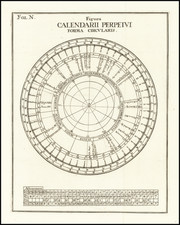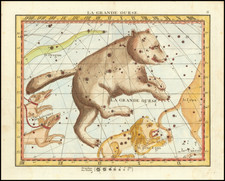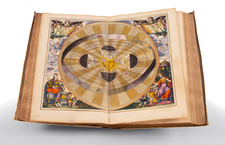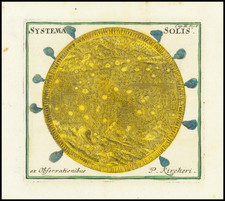Rare lunar map series, which appeared in Giambattista Riccioli's highly important Almagestum Novum.
The work published in 1651 as a defense of the Catholic Church's stance in opposition to the views espoused by Galileo, Kepler, and Copernicus, which argued for a heliocentric model of the solar system. While Ricciol's work would ultimately prove not to be the prevailing model of the universe, Riccioli's system of lunar nomenclature would endure and the maps, drawn by fellow Jesuit Francisco Grimaldi, which primarily confirmed and improved upon the work of Van Langren and Hevelius. Riccioli's naming scheme remains in use to this day
Riccioli based his work on a division of the visible lunar surface into 8 parts, numbered in the Roman style from I through VIII. The system was comprised of parts, the first used for the broad features of land and seas, and the second for the craters.
Riccioli used the names of various historical effects and weather conditions attributed to the Moon throughout history. Thus there were the seas of rain (Mare Imbrium), clouds (Mare Nubium), crises (Mare Crisium), tranquility (Mare Tranquilitatis). The landmasses were given comparable names; thus there were the lands of sterility (Terra Sterilitatis), heat (Terra Caloris), and liveliness (Terra Vitae).
For the craters, Riccioli followed Van Langren's idea of commemorating famous people. However, unlike Van Langren, Riccioli avoided political conflict by using only the names of deceased philosophers and scholars with a connection to astronomy.










![[Hydra, Corvus and the Crater]](https://storage.googleapis.com/raremaps/img/small/43407.jpg)



![Sphere Droite [and] Sphere Parallele](https://storage.googleapis.com/raremaps/img/small/6208.jpg)